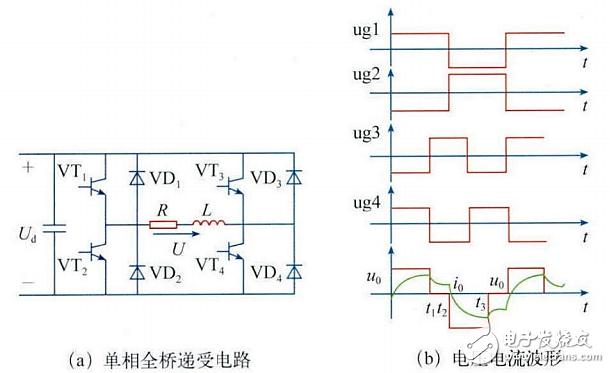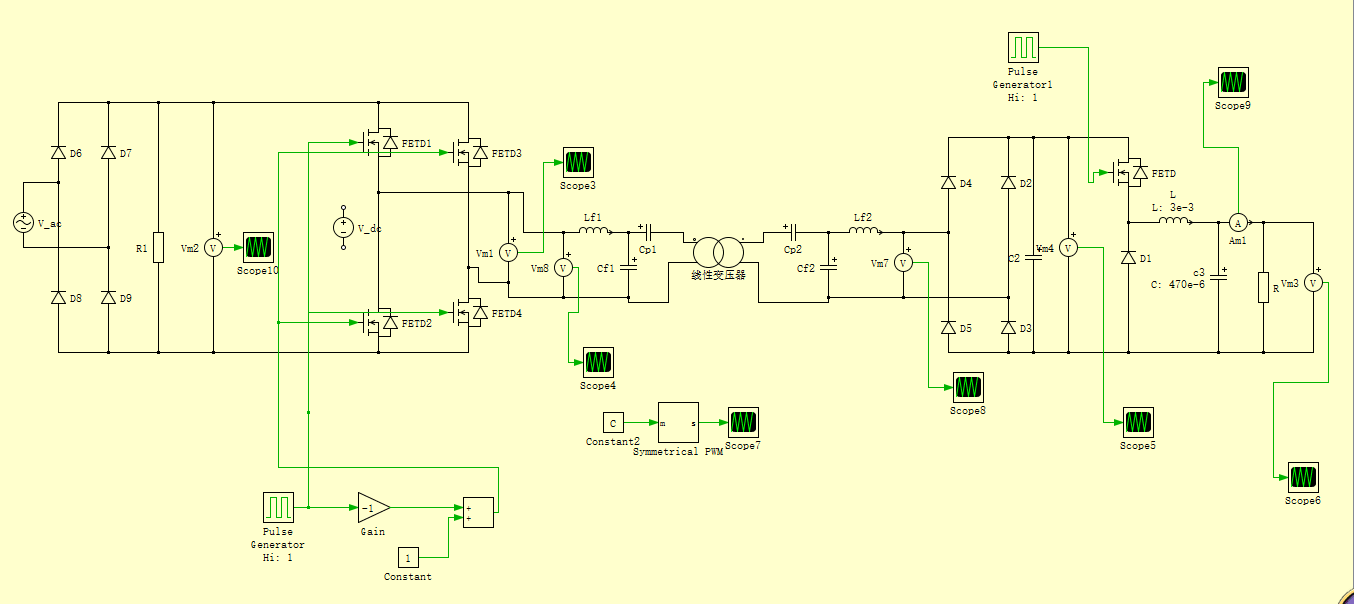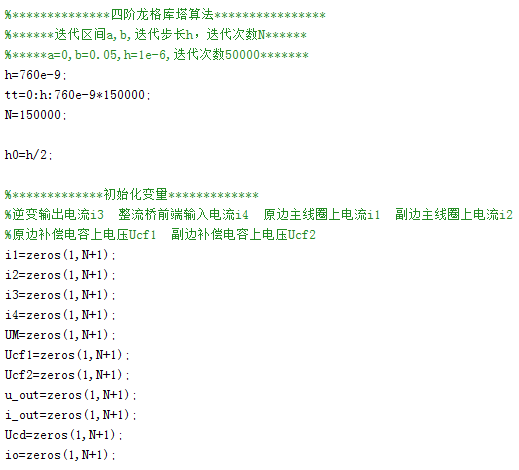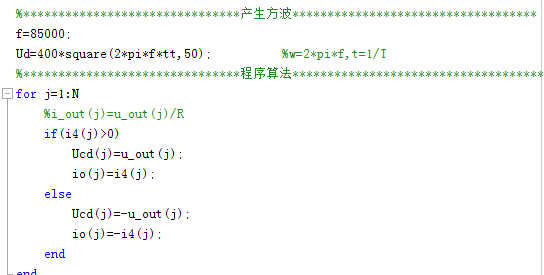基于FPGA的动态无线充电半实物仿真系统设计毕业论文
2020-04-12 14:17:42
摘 要
本文描述了在FPGA软件环境下电动汽车动态无线充电的半实物仿真技术。电动汽车动态无线充电技术通过在汽车行驶路面间隔铺设一系列能量发送线圈,使得汽车在行驶过程中能够进行持续的充电。这样不仅提高电动汽车的续航里程,而且可以减小电池组重量,提高运输效率。由于传统的静态无线充电技术不能准确提升充电的效率,并且所占空间也比较大,因此研发出高效率的充电系统就显得势在必行。基于上述理由,本文对动态无线充电系统的工作原理及波形仿真结果进行了分析。
文章主要设计并研究了电动汽车动态无线充电系统的原理电路拓补模型,并利用四阶龙格库塔法对电路中电感和电容的参数在输入电流电压作用下的波形进行了拓补分析与仿真。主电路采取三相电平整流器升压电路(Boost电路),并使用SPWM技术及双闭环调控系统。
在仿真过程中,先确定电路中流经电容和电感的电流,以及两端电压的微分方程。由于微分方程总体呈非线性,用常规方法不容易解出,故使用工科领域常用的四阶龙格库塔法求出方程的通解。随后利用FPGA芯片的并行计算功能,对方程通解涉及的参数进行仿真与模拟。在此过程中,分别运用MATLAB和Verilog HDL语言编写相关程序,建立龙格-库塔法的相应模型,并得到系统参数的计算结果。根据计算结果,利用软件绘图功能绘出电流和电压的相应波形,并确定输出信号是否符合设计的总体要求。最后根据不同状态下的仿真波形对电动汽车无线充电的特性进行总结,并由此归纳出电动汽车充电技术发展的总体方向,同时为系统工作效率的提升提供一个有效的手段。
关键词:电动汽车 FPGA 动态无线充电 龙格-库塔法 波形仿真
Abstract
This article describes a semi-physical simulation technique for dynamic wireless charging of electric vehicles in an FPGA software environment. The dynamic wireless charging technology of electric vehicles provides a series of energy transmission coils at intervals along the road surface of a vehicle, so that the vehicle can be continuously charged during driving. This will not only increase the cruising range of the electric vehicle, but also reduce the weight of the battery pack and improve the transportation efficiency. Because the traditional static wireless charging technology cannot accurately improve the charging efficiency and the space occupied is relatively large, it has become imperative to develop a highly efficient charging system. Based on the above reasons, this paper analyzes the working principle and waveform simulation results of a dynamic wireless charging system.
窗体顶端
The passage mainly designs and analyzes the principle circuit topology model of dynamic wireless charging system for electric vehicles, and uses the fourth-order Runge-Kutta method to perform topological analysis and simulation of the parameters of the inductance and capacitance in the circuit under input current and voltage. The main circuit adopts the boost circuit layout of the three-phase level rectifier circuit and adopts the SPWM technology and the double closed-loop control system.
In the simulation process, first determine the current flowing through the capacitor and inductor in the circuit, and the differential equation of the voltage at the equation.Because the differential equation is generally nonlinear, it is not easily solved by conventional methods. Therefore, the general solution of the equation is obtained using the fourth-order Runge-Kutta method commonly used in the engineering field. After that, using the parallel computing function of the FPGA chip, the parameters involved in the general solution of the equation are simulated and simulated. In this process, relevant programs are written using MATLAB and Verilog HDL respectively, and the corresponding model of the Runge-Kutta method is established to obtain the system based on the calculation result of the parameter. According to the calculation results, the corresponding waveforms of current and voltage are drawn using the software drawing function, and it is determined whether the output signal meets the overall design requirements. Finally, according to the simulation waveforms under different conditions, the characteristics of wireless charging of electric vehicles are summarized, and the overall direction of the development of electric vehicle charging technology is concluded. At the same time, it provides an effective means for the improvement of system work efficiency.
Keywords: electric vehicle, FPGA, dynamic wireless charging, Runge-Kutta method, wave simulation
目录
摘要 I
Abstract II
第一章 绪论 1
1.1 研究目的和意义 1
1.2 国内外研究现状 1
1.2.1 国外研究现状 1
1.2.2 国内研究现状 2
1.3论文主要框架 3
第二章 原理电路分析 4
2.1 电路模型概述 4
2.2 谐振补偿网络 5
2.2 电路参数计算 7
2.4 全桥逆变器与零响应分析 8
2.4.1 全桥逆变器简介 9
2.4.2 零响应分析理论 10
2.4.2 零响应电路方程分析 10
2.5 本章小结 11
第三章 无线充电系统的数学建模 12
3.1 四阶龙格库塔法简介 12
3.2 电路微分方程的建立 13
3.3 四阶龙格库塔法程序编写及建模 14
3.3.1 MATLAB程序编写 14
3.3.2 Quartus程序编写 17
3.4 本章小结 22
第四章 程序仿真 23
4.1 FPGA功能介绍 23
4.1.1 FPGA开发流程 23
4.1.2 FPGA开发平台——QUARTUS II简介 24
4.2 系统的MATLAB仿真 25
4.2.1 数据建模 25
4.2.2 simulink仿真波形分析 27
4.3 系统的Quartus仿真 29
4.3.1 ModelSim仿真步骤 29
4.3.2 Quartus仿真波形分析 29
4.4 本章小结 33
第五章 结论 34
参考文献 35
附录:四阶龙格库塔法VHDL程序 37
致谢 53
绪论
研究目的和意义
本文目的为钻研FPGA环境下电动汽车动态无线充电的半实物仿真。传统的无线充电模式中,系统工作往往需要较长的仿真时间,因此存在一定的局限性。FPGA的并行计算功能可以使多个指令同时进行,从而提升系统的工作速度。论文的研究目的是对系统进行建模,利用工程中常用的龙格—库塔法搭建相应的系统平台,可根据仿真结果验证该环境下提升仿真速度及效果的可行性。
能源易得,对环境友好的电动汽车,成为人们研究和发展新能源技术、改革汽车生产业的主要方向。而近几年动力电池各项指标显著提高,各种技术的不断革新,更加快了这一进程的发展[1]。
以上是毕业论文大纲或资料介绍,该课题完整毕业论文、开题报告、任务书、程序设计、图纸设计等资料请添加微信获取,微信号:bysjorg。
相关图片展示:











